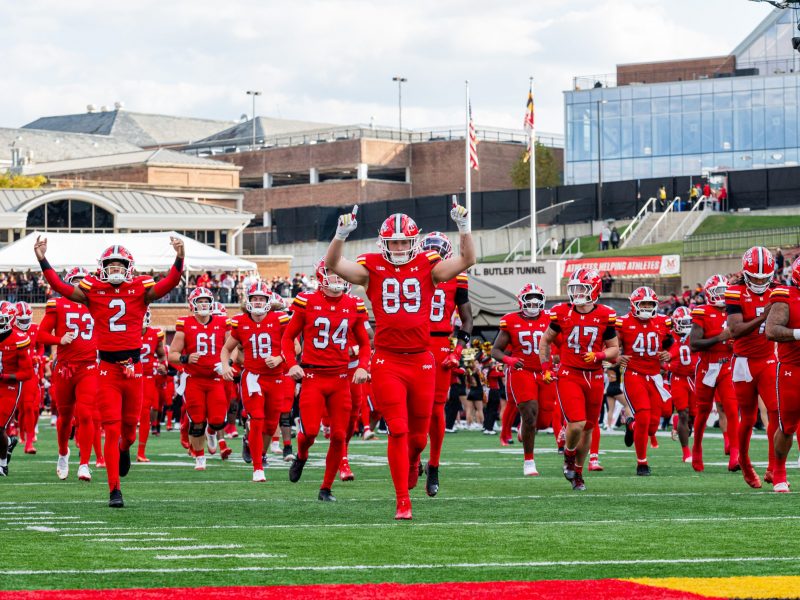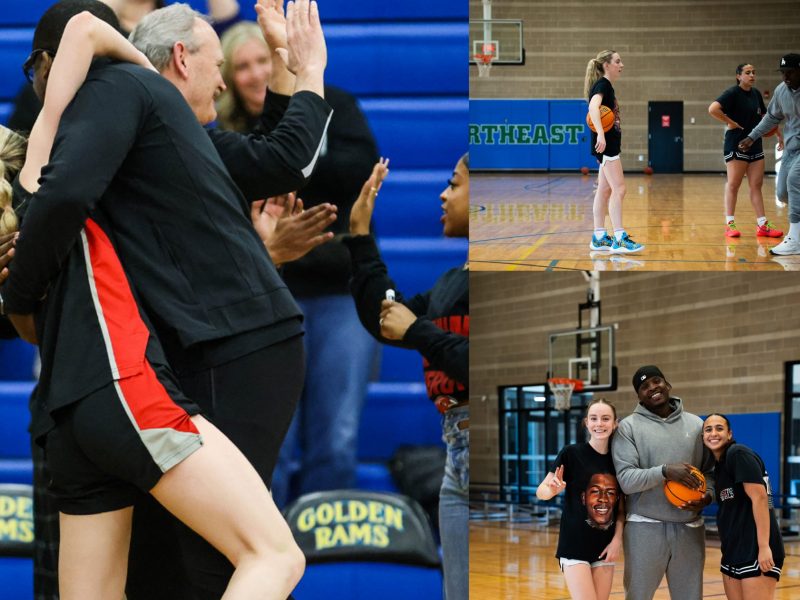The Stamp Student Union food court was packed with its usual crowd yesterday afternoon, but not everyone was lining up for McDonald’s or Taco Bell.
Instead, dozens of students guzzled cups of water at an SGA-hosted event that tasked students with determining the difference between bottled and tap water. The Student Government Association teamed up with MaryPIRG and Quench to organize Tap That, a campaign intended to educate students about the negative impacts of water bottles on everything from the environment to their wallets.
During the event, students drank out of clear plastic cups containing tap water from the student union’s filter stations and Aquafina bottled water, the university’s official bottled water, to see whether they could taste the difference. In addition, students were encouraged to sign a MaryPIRG petition to kick water bottles off the campus and could enter a raffle to win reusable water bottles provided by Dining Services.
Members of the three organizations used the opportunity to chat with students about the disadvantages of bottled water, noting its negative impact on ecosystems and students’ failure to recycle the empty bottles. Event organizers also targeted students’ pockets, informing them that tap water is substantially cheaper than bottled water and that about 90 percent of the bottled water price goes toward producing the bottle itself.
SGA Director of Sustainability Matthew Popkin said the taste test was an interactive way to inform students about the pitfalls of plastic bottled water and to encourage them to switch to toting reusable water bottles around the campus instead.
“It’s a practice that directly affects students here and lets students know they can have a direct impact,” Popkin said of making the switch to reusable bottles. “Once they’re educated about it, we’re hoping they will make the transition.”
MaryPIRG member and event organizer Jack Stansbury said the taste test approach was a way to help students realize that, taste-wise, bottled water is really just “glorified tap water.”
“It’s psychological that people think bottled water is better,” Stansbury said. “Most students can taste a difference, but they can’t tell which is which.”
Although event organizers didn’t keep track throughout the entire event of how many students correctly identified the water, a tally sheet they kept at the beginning showed 36 out of 52 students correctly identified the mystery cups. In addition, twice as many students favored the taste of tap water to that of bottled water.
Sophomore chemical engineering major Michael Powell said that the event was a good way to attract students but that it wouldn’t work on avid bottled water drinkers who enjoy the convenience of grab, pay and go.
“I’m a huge bottled water fan — I drink it every day,” Powell said. “It’s a good argument, but it comes down to convenience.”
Freshman letters and sciences major Nikki Lust was more optimistic that the taste test would get students thinking twice before heading for the refrigerated section of the student union’s Union Shop.
“I think it could help students see that there isn’t a big difference in taste between bottled water and tap water,” said Lust, who said she prefers using Brita filters. “Switching to reusable water won’t make a big difference to [students], but it will for the environment.”
Although the event attracted significant student attention, event organizers said the student transition from bottled water to tap water wouldn’t happen overnight.
“It’s going to take a long time to build support,” said MaryPIRG member Evan Harvey, “but I think we can do it.”
saravia at umdbk dot com


